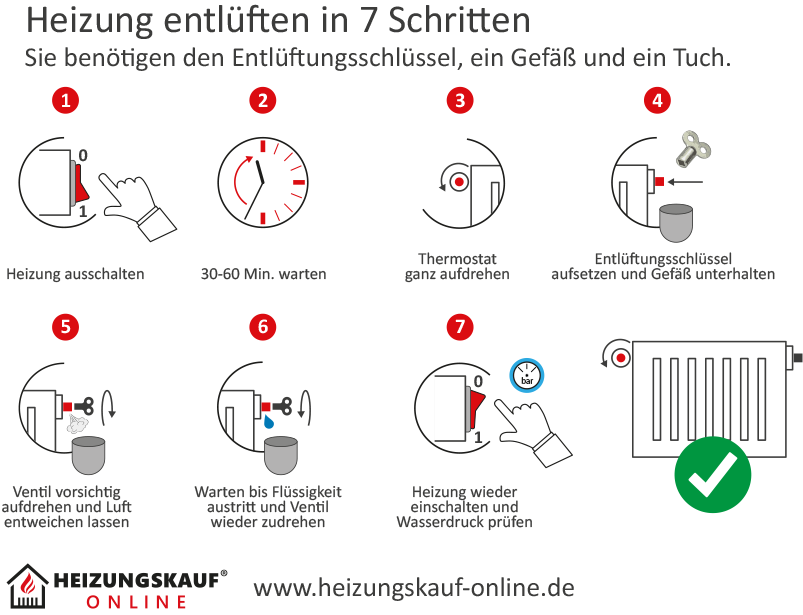How to bleed a heating system
- detect air in the heater
- necessary tools
- instructions – step by step
If your radiators are only partially warm or not warm at all, there is usually air in the heating system. This is particularly annoying in winter and, if done incorrectly, can cause unnecessarily high costs. However, this problem can be solved quite easily. How exactly to do it and what to consider, we explain to you in this blog post.

How do I detect air in the heater?
The most common and noticeable sign of air in the heater is poor heat transfer. In a heating system, water is responsible for transferring energy from the heating system to the home. Oxygen, on the other hand, is not a good a conductor of heat. Therefore, your radiator will remain cold if there is air in it. The production of gurgling noises can also be an indication of air in the system. If you observe any of these signs, the first thing you should do is try to bleed the heater. If the problem persists, ask a professional to check your system. Furthermore, it can be helpful to bleed the system before the winter season and after installing a new heater.
What do I need to bleed my heater?
Basically, you do not need much. A container to catch escaping water. A cloth, in case water does spill, and a square wrench to open the valve. Once you have your tools together, it shouldn’t take you more than a few minutes to complete the process.
Venting step by step
Step 1
If you are a homeowner, check if there is enough pressure in the system and then turn off the circulation pump or the heating. If you are a tenant of an apartment, you probably do not have access to these switches, which is not a big deal. The process changes only minimally. Simply start with the radiator that is farthest from the system and check it again after the process is complete.
Step 2
To allow all the air to collect in the radiator, wait at least 30 minutes, sometimes an hour is recommended.
Step 3
Now turn the thermostat of the radiator to the highest level.
Step 4
Put the square wrench on the radiator and place the container so that the water is collected. If necessary, wrap the towel around the valve.
Step 5
To allow the air to escape, carefully open the valve. The air can be very hot, so be sure to open the valve in a controlled manner and with sufficient distance.
Step 6
If liquid comes out of the radiator and the hissing becomes quieter, the air has completely escaped. Close the valve as soon as possible to avoid losing too much water.
Step 7
The process is as good as finished. Turn on the heater, or the circulation pump, and check the water pressure. The escaping water may cause the pressure in the system to drop and you may need to add more water. The pressure can be read on the pressure gauge, and the ideal range is usually marked in color.
Done!
Now their radiators should warm up silently again. If this is not the case and your system remains cold, contact a professional to analyze the problem.
Conclusion
Venting is highly recommended when you notice signs such as gurgling noises or a radiator that is too cold. Venting is also helpful before winter. The process only takes a few minutes and hardly any tools are needed. Be sure to monitor the pressure in your system when you finish. If problems persist, contact a professional.


